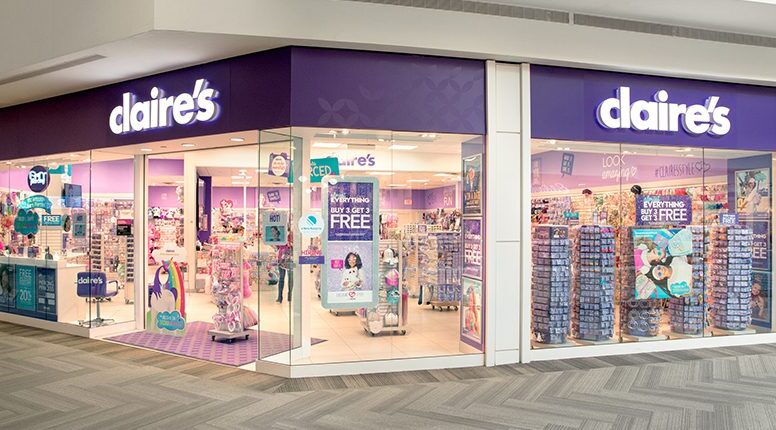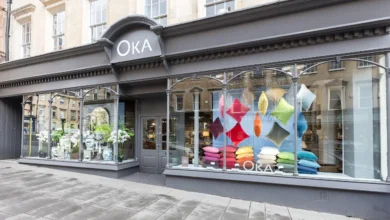Claire’s on the brink: can the chain avoid another collapse?
Once the ultimate destination for ear piercings and sparkle, Claire’s is now battling towering debt, cultural irrelevance, and a fiercely competitive retail landscape. Is there a way back for the brand that defined a generation?

Register to get 1 free article
Reveal the article below by registering for our email newsletter.
Want unlimited access? View Plans
Already have an account? Sign in
For decades, Claire’s has been the go-to destination for sparkly earrings, scrunchies and ear piercings – a rite of passage for generations of teenagers. But the glitter is starting to fade. The jewellery and accessories retailer, which operates nearly 300 shops in the UK and more than 2,300 worldwide, has appointed restructuring specialists to draw up a rescue plan amid mounting financial pressures.
With a $480m (£355m) loan due in 2026, Claire’s appears to be running out of time and options. Behind the bright pink branding lies a story of structural headwinds, cultural disconnect, and a retail model struggling to resonate with Gen Z and Gen Alpha. The question now is whether Claire’s can reinvent itself or whether its future lies in downsizing and survival mode.
Although Claire’s debt isn’t technically due until December 2026, the fact that the retailer has brought in Interpath Advisory to seek investors signals deeper trouble.
“It looks quite bleak,” says Matthew Padian, partner at law firm Stevens and Bolton. “Claire’s has been in poor financial health for some time – the most recent statutory accounts for the UK operating company were qualified by its auditors and noted a letter of support from its US parent.”
Padian is of the opinion that the group has little prospect of repaying its outstanding loan that is due next December, and presumably with no refinancing in the pipeline, he sees the group having to consider other alternatives with the help of restructuring advisors. “[This] will almost inevitably involve some kind of restructuring, with creditors being compromised, and, if that fails to win, support break-up or asset sales will follow,” Padian adds.
The urgency has been compounded by rumours that Claire’s US operations are exploring a bankruptcy filing for the second time in seven years. Such a move would echo its 2018 Chapter 11 bankruptcy, when the brand shed a significant number of stores and emerged under the control of hedge funds Elliott Management and Monarch Alternative Capital.
More locally, Claire’s UK arm has reported cumulative losses of £25m over the past three years, with its most recent accounts showing a £4.7m loss on turnover of £137m. Inflation, unfavourable currency rates, and transportation bottlenecks have all eaten into margins. Meanwhile, a heavy reliance on low-cost imports from China has left Claire’s vulnerable to US tariffs introduced during Donald Trump’s trade war.
Sources suggest a third of Claire’s UK stores could close under any restructuring plan, putting hundreds of jobs at risk. According to banking insiders, high street investor Hilco Capital – known for its role in rescuing HMV and backing Lakeland – is among the potential bidders. Other names in the frame reportedly include Alteri Investors and Modella Capital, which recently acquired WH Smith’s high street stores.
Claire’s faces intense competition from nimble online brands offering cheaper, customisable accessories that align with micro-trends.
Financial pressure may be the headline, but some argue the deeper issue is cultural. Claire’s once thrived in a mall (or for the Brits, shopping centre) culture that no longer exists. Today’s teens live on TikTok, not so much on high streets and shopping centres.
“While financial pressure like the looming £355m loan and restructuring talk is the immediate concern, the longer-term issue here is its relevance,” says Tim Ryman, retail strategist and managing director of Masterclip. “This is a brand that once thrived on a very specific type of mall culture, where tweens wanted glittery accessories and went in-store for ear piercings. That dynamic just doesn’t resonate in the same way anymore, especially with Gen Z and Gen Alpha who shop online, are more trend-driven, and are influenced by fast-moving platforms like TikTok.”
Ryman adds that Claire’s faces intense competition from nimble online brands offering cheaper, customisable accessories that align with micro-trends. “For Claire’s to reposition successfully, it would need more than a rebrand – it needs a complete rethink of how it reaches its customers, how it uses social media, and how it builds community,” he argues.
In fact, recent research from SAP Emarsys underscores the generational shift in retail expectations. According to its findings, Gen Z is the most difficult consumer segment to impress, with 35% saying they won’t engage with a brand at all unless it offers a fully personalised experience. Meanwhile, 38% say they will quickly abandon brands that don’t tailor their offerings to individual tastes. For a retailer like Claire’s – still perceived by some as formulaic or outdated – the warning could not be clearer.
Claire’s struggles are far from unique. Structural challenges, such as high business rates, inflation, wage hikes and supply chain disruption, have left many household names fighting to stay afloat.
“Given the long list of retailers who have hit the skids in recent years – among them Wilko, Ted Baker, Homebase, Poundland, Body Shop, River Island – it seems unfair to single out management for unfortunate situations like this,” says Padian. “The challenges associated with running many retail sites in a climate of rising employment costs, high business rates, tariffs and general economic uncertainty should not be downplayed.”
Recent precedents, such as River Island’s restructuring plan and The Body Shop’s fire sale of stores, suggest a bumpy road ahead.
And then there’s the supply chain. Stuart Greenfield, sales director at Advanced Supply Chain, believes Claire’s failed to adapt. He attributes part of Claire’s problems to its failure to adapt its supply chain in a fast-changing market.
“The retailer has borne the financial impact of US tariff reforms on imports from China, eroding already tight margins on low-value goods. Future survival of the brand will undoubtedly focus on shutting stores to improve balance sheets,” Greenfield says. “However, it’s not as straightforward as this. Successful retail models must constantly satisfy shopper demand for choice, availability, convenience and cost. Agile supply chains are the backbone of this and critical to delivering efficiencies that protect margins.”
If a buyer cannot be found, experts predict a restructuring plan is the most likely route for Claire’s UK operations.
“A restructuring plan offers the ability to achieve a more far-reaching restructuring than a CVA as it can impact both secured and unsecured creditors and bind non-consenting creditors,” Padian explains. “But then if a restructuring plan fails, administration is the most likely alternative – with administrators likely to be tasked with closing unprofitable parts of the business and looking for buyers interested in any valuable assets.”
Recent precedents, such as River Island’s restructuring plan and The Body Shop’s fire sale of stores, suggest a bumpy road ahead. And if the US parent files for bankruptcy, the uncertainty could ripple into the UK arm, jeopardising supply chains and eroding confidence among creditors.
While the financial prognosis is grim, analysts argue that a brand reboot could yet save Claire’s. But this would require a radical reinvention, not just cost-cutting.
“Claire’s hasn’t been able to drive the conversation to appeal to its core audience in the same way that brands like Pop Mart have,” notes Kirsty Hathaway, executive creative director at ad agency JOAN London. “Gen Z and Gen Alpha love being ahead of the trend, so how can Claire’s show up here to drive this? What collaborations can they get ahead of, and how can they be more unexpected to drive hype? It should be about being agile, relevant, creative and obsessing over the audience.”
Liam Quinn, director of innovation at Visualsoft, argues Claire’s online experience lags behind expectations.
The accessories market is booming; Pop Mart’s Labubu craze has made it more profitable than Barbie makers, according to Hathaway. Yet, Claire’s has failed to capture that energy. Hathaway suggests Claire’s should borrow tactics from luxury disruptors like Jacquemus, saying, “Inject fun into the fashion and retail space by using creativity to drive audience interest. It doesn’t need to be a big campaign. In fact it shouldn’t.”
Tech innovation could also play a role. Liam Quinn, director of innovation at Visualsoft, argues Claire’s online experience lags behind expectations. Despite its huge physical store presence, Quinn has called its operations “a little slow and clunky, with fairly basic product photography and limited features to keep visitors engaged”.
Quinn explains his assessment thus: “[Claire’s] have a Gen Z target audience that have come to expect fast and engaging storytelling in their online experiences – things like virtual try-ons, shoppable video, TikTok shop. You just have to look at Astrid & Miyu. They started ecommerce-first, built an amazing online experience, then rolled out physical stores that seamlessly integrate with their digital offering.”
Could Claire’s follow the path of Crocs or Barbie and reinvent itself for a new generation? Or will it go the way of Wilko: a household name consigned to memory? For now, the brand’s fate hinges on whether a buyer steps in with more than just a cost-cutting mindset. As Ryman notes, “A turnaround for Claire’s is possible, but only if a buyer like Hilco has the appetite to go beyond cuts and closures, and genuinely invests in building a new brand identity. Otherwise, downsizing may be the only realistic route.”
The sparkle that once defined Claire’s won’t be enough to light its future. To avoid the fate of other once-beloved retailers, it must become more than a memory. That means reinventing not just its product range, but its purpose – offering a bold, digital-savvy identity that today’s teens actually want to buy into.







